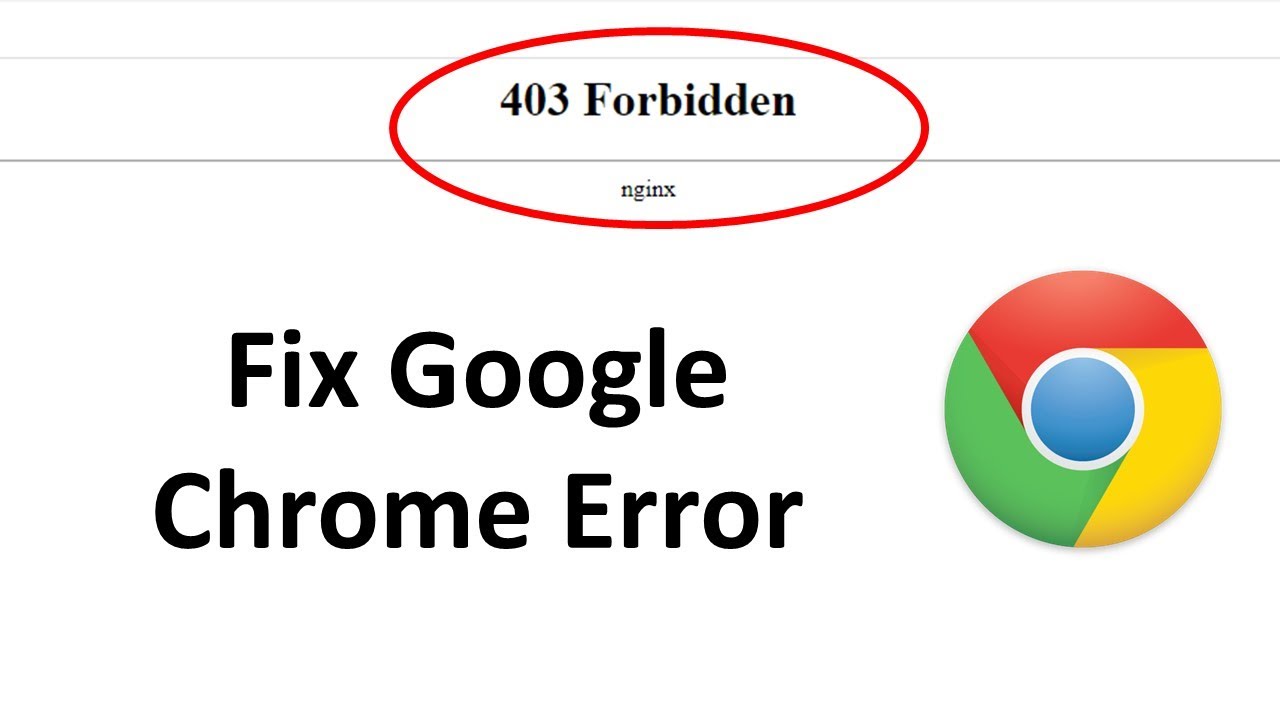Introduction
Encountering a "Bad Request" error while browsing the web can be frustrating and disruptive to your online activities. This error message, often accompanied by a numeric code such as "400 Bad Request," indicates that the server did not understand the request due to incorrect syntax or other client-side issues. When this error occurs specifically on the Google Chrome browser, there are several troubleshooting steps you can take to resolve it and get back to seamless browsing.
In this comprehensive guide, we will explore various methods to address the "Bad Request" error on Chrome. From clearing browser cache and cookies to checking for problematic browser extensions, updating Chrome to the latest version, and even addressing potential malware or adware issues, we will cover a range of solutions to help you navigate through this frustrating error.
By following the steps outlined in this guide, you can effectively troubleshoot and resolve the "Bad Request" error on Chrome, ensuring a smoother and more enjoyable browsing experience. Let's dive into the details of each method to equip you with the knowledge and tools needed to tackle this issue head-on.
Clearing Browser Cache and Cookies
Clearing the browser cache and cookies is a fundamental troubleshooting step that can effectively resolve the "Bad Request" error on Chrome. The cache and cookies stored in your browser can sometimes become corrupted or outdated, leading to communication issues with websites and servers. By clearing these temporary files, you can refresh your browser's data and potentially eliminate the underlying cause of the error.
To clear the cache and cookies in Google Chrome, start by accessing the browser's settings. You can do this by clicking on the three-dot menu icon in the top-right corner of the browser window and selecting "Settings" from the dropdown menu. Alternatively, you can type "chrome://settings/" in the address bar and press Enter to directly access the settings page.
Once in the settings, scroll down and click on "Privacy and security" in the left-hand menu. Under this section, select "Clear browsing data." This will open a window where you can choose the time range for which you want to clear the data. To ensure a thorough cleanup, select "All time" from the dropdown menu. You can then choose the types of data to clear, including browsing history, cookies, and cached images and files. After making your selections, click on the "Clear data" button to initiate the process.
After clearing the cache and cookies, restart the Chrome browser and revisit the website where you encountered the "Bad Request" error. In many cases, this simple yet effective step can rectify the issue, allowing you to access the website without encountering the error message.
It's important to note that clearing the cache and cookies will log you out of websites and remove site-specific preferences, so you may need to re-enter login credentials and adjust certain settings after completing this process. However, the potential benefits in resolving the "Bad Request" error make this inconvenience worthwhile.
By regularly clearing your browser's cache and cookies, you can not only address specific errors but also ensure the overall health and performance of your browsing experience. This proactive approach to managing browser data can contribute to smoother interactions with websites and mitigate potential issues that may arise due to outdated or corrupted data.
Checking for Browser Extensions
Browser extensions, also known as add-ons or plugins, can significantly enhance the functionality and features of your web browser. However, certain extensions may conflict with website functionality or interfere with the communication between your browser and the server, leading to the occurrence of a "Bad Request" error on Chrome. Therefore, it is essential to examine and manage your browser extensions to identify and address any potential issues.
To check for browser extensions in Google Chrome, begin by accessing the browser's extension management interface. You can do this by clicking on the three-dot menu icon in the top-right corner of the browser window and selecting "More tools" followed by "Extensions" from the dropdown menu. Alternatively, you can type "chrome://extensions/" in the address bar and press Enter to directly access the extensions page.
Once in the extensions interface, carefully review the list of installed extensions. Pay attention to any recently added or unfamiliar extensions, as well as those that are known to modify web requests or alter website behavior. While many extensions are designed to improve productivity and browsing experience, some may inadvertently cause conflicts that result in the "Bad Request" error.
Consider temporarily disabling or removing suspicious or unnecessary extensions to isolate the potential source of the error. To disable an extension, simply toggle the switch next to its name to the "Off" position. If you suspect that a specific extension is causing the issue, you can remove it entirely by clicking on the "Remove" button associated with the extension.
After disabling or removing extensions, restart the Chrome browser and revisit the website where you encountered the error. By systematically evaluating the impact of different extensions on your browsing experience, you can pinpoint and address any compatibility issues that may be contributing to the "Bad Request" error.
It is important to note that while browser extensions can offer valuable functionality, they can also introduce vulnerabilities and conflicts. Therefore, it is advisable to review and manage your extensions regularly, ensuring that they align with your browsing needs and do not compromise the stability and security of your browser.
By proactively monitoring and optimizing your browser extensions, you can minimize the likelihood of encountering errors such as the "Bad Request" message on Chrome, fostering a more seamless and reliable browsing environment. Additionally, staying informed about the purpose and behavior of installed extensions can empower you to make informed decisions regarding their usage and impact on your browsing activities.
Updating Chrome to the Latest Version
Ensuring that Google Chrome is running the latest version is a crucial step in troubleshooting and resolving the "Bad Request" error. Chrome updates often include bug fixes, security patches, and performance enhancements, addressing potential issues that may contribute to communication errors with websites and servers. By keeping your browser up to date, you can leverage the latest improvements and minimize the likelihood of encountering persistent errors during your browsing sessions.
To update Google Chrome to the latest version, start by accessing the browser's settings. Click on the three-dot menu icon in the top-right corner of the browser window and select "Settings" from the dropdown menu. Alternatively, you can type "chrome://settings/" in the address bar and press Enter to directly access the settings page.
In the settings menu, navigate to the "About Chrome" section, which is typically located in the left-hand menu under "Help." Clicking on "About Chrome" will trigger the browser to check for updates. If a new version is available, Chrome will automatically begin downloading and installing the update in the background.
Once the update is downloaded, you will be prompted to relaunch the browser to apply the changes. It is important to save any ongoing work and close other tabs or applications before proceeding with the relaunch. After relaunching Chrome, the latest version will be active, incorporating the most recent improvements and fixes provided by Google's development team.
By regularly updating Google Chrome, you not only benefit from enhanced security and performance but also mitigate the risk of encountering persistent errors such as the "Bad Request" message. Additionally, staying current with browser updates aligns with best practices for maintaining a secure and reliable browsing environment, safeguarding your online activities from potential vulnerabilities and compatibility issues.
In some cases, the "Bad Request" error may be directly linked to specific issues that have been addressed in recent Chrome updates. Therefore, ensuring that your browser is running the latest version can effectively eliminate underlying causes of the error, allowing for smoother interactions with websites and servers.
In summary, updating Google Chrome to the latest version is a proactive and essential measure to address the "Bad Request" error and optimize your browsing experience. By staying attentive to available updates and promptly applying them, you can harness the full potential of Chrome's capabilities while minimizing the impact of potential errors and inconsistencies.
Resetting Chrome Settings
Resetting Chrome settings can serve as a comprehensive solution to address persistent issues, including the "Bad Request" error, by restoring the browser to its default state. This process can effectively eliminate problematic configurations, preferences, and temporary data that may be contributing to communication errors with websites and servers.
To initiate the reset of Chrome settings, access the browser's settings by clicking on the three-dot menu icon in the top-right corner of the browser window and selecting "Settings" from the dropdown menu. Alternatively, you can type "chrome://settings/" in the address bar and press Enter to directly access the settings page.
Within the settings menu, scroll down and click on "Advanced" to reveal additional options. Under the "Reset and clean up" section, select "Restore settings to their original defaults." This action will open a window where you can review the components that will be reset, including your homepage, search engine, tabs, and content settings.
Before proceeding with the reset, it is important to consider the potential impact on your browsing experience. Resetting Chrome settings will revert various preferences and configurations to their default state, potentially affecting your personalized browsing environment. As a result, you may need to reconfigure certain settings and preferences after completing the reset process.
Upon confirming the reset, Chrome will proceed to restore the selected components to their original defaults. It is advisable to restart the browser after the reset to ensure that the changes take effect. By resetting Chrome settings, you can effectively eliminate underlying configurations or data issues that may be contributing to the "Bad Request" error, providing a clean slate for improved browsing interactions.
It is important to note that while resetting Chrome settings can be a powerful troubleshooting step, it should be approached with caution. Consider documenting your preferred settings and configurations before initiating the reset to streamline the process of re-establishing your personalized browsing environment afterward.
In summary, resetting Chrome settings offers a comprehensive approach to addressing persistent errors such as the "Bad Request" message. By restoring the browser to its default state, you can effectively eliminate potential configuration issues and streamline your browsing experience. This proactive measure aligns with best practices for maintaining a stable and reliable browsing environment, empowering you to navigate the web with greater confidence and efficiency.
Checking for Malware or Adware
Checking for malware or adware is a critical step in troubleshooting the "Bad Request" error on Google Chrome. Malicious software, including adware, spyware, and other forms of malware, can compromise the security and stability of your browser, leading to communication errors and disruptive browsing experiences. By conducting a thorough examination for potential threats, you can identify and address any underlying issues that may be contributing to the occurrence of the error.
To begin the process of checking for malware or adware, it is advisable to utilize reputable antivirus and antimalware software. These security tools are designed to detect and remove various forms of malicious software, providing a comprehensive defense against potential threats. Ensure that your antivirus software is up to date and perform a full system scan to thoroughly examine your computer for any signs of malware or adware.
In addition to utilizing antivirus software, consider leveraging dedicated antimalware tools that specialize in detecting and eliminating adware and potentially unwanted programs (PUPs). These tools can complement the capabilities of traditional antivirus software, offering targeted detection and removal of specific types of threats that may impact your browsing experience.
Furthermore, it is beneficial to review your browser's extensions and plugins to identify any suspicious or unauthorized additions that may be associated with adware or potentially harmful behavior. Remove any unfamiliar or questionable extensions and thoroughly review the permissions and activities of existing extensions to ensure that they align with legitimate and trustworthy functionality.
In some cases, malicious software may attempt to modify browser settings or inject unwanted content into web pages, leading to communication errors and disruptive behavior. Therefore, it is essential to remain vigilant and promptly address any indications of unauthorized changes or suspicious activities within your browser environment.
By proactively checking for malware or adware and taking appropriate measures to remove any identified threats, you can significantly reduce the risk of encountering the "Bad Request" error on Google Chrome. Additionally, maintaining a secure and malware-free browsing environment contributes to a smoother and more reliable online experience, safeguarding your interactions with websites and servers.
In summary, conducting a thorough examination for malware and adware aligns with best practices for maintaining a secure and stable browsing environment. By leveraging reputable security tools and remaining attentive to potential threats, you can effectively mitigate the impact of malicious software and minimize the occurrence of disruptive errors such as the "Bad Request" message on Google Chrome.
Contacting Website Support
When all other troubleshooting methods have been exhausted and the "Bad Request" error persists, reaching out to the support team of the affected website can provide valuable insights and assistance in resolving the issue. Website support teams are equipped with the expertise and resources to address specific errors and technical challenges that users encounter while accessing their platforms.
Initiating contact with website support typically involves locating the designated support channels provided by the website. This may include accessing a dedicated support page, submitting a support ticket through an online form, or utilizing live chat or email communication options. Some websites also offer community forums or knowledge bases where users can seek assistance and engage with other community members to address technical issues.
When reaching out to website support, it is important to provide detailed information about the "Bad Request" error, including any specific error codes or messages received, the steps taken to troubleshoot the issue, and the frequency or consistency of the error occurrence. Clear and concise communication can facilitate a more efficient and targeted response from the support team, enabling them to understand the nature of the issue and provide relevant guidance or solutions.
In some cases, website support may be able to identify server-side issues or specific configurations that could be contributing to the "Bad Request" error. By leveraging their insights and technical capabilities, the support team can collaborate with users to diagnose and address underlying causes, potentially leading to a resolution that restores seamless access to the website.
Furthermore, website support interactions can offer users the opportunity to receive personalized assistance tailored to their specific browsing environment and the intricacies of the encountered error. Support representatives may provide detailed instructions, alternative access methods, or temporary workarounds to mitigate the impact of the error while a permanent solution is being pursued.
Engaging with website support not only facilitates direct assistance in resolving the "Bad Request" error but also contributes to the overall improvement of the website's user experience. By reporting and addressing technical issues, users play a vital role in helping website operators identify and rectify potential challenges, ultimately enhancing the accessibility and reliability of the online platform for all visitors.
In summary, contacting website support serves as a valuable resource for users encountering persistent errors such as the "Bad Request" message. By leveraging the expertise and assistance of the support team, users can collaborate in diagnosing and resolving technical challenges, ultimately contributing to a more seamless and enjoyable browsing experience.

























